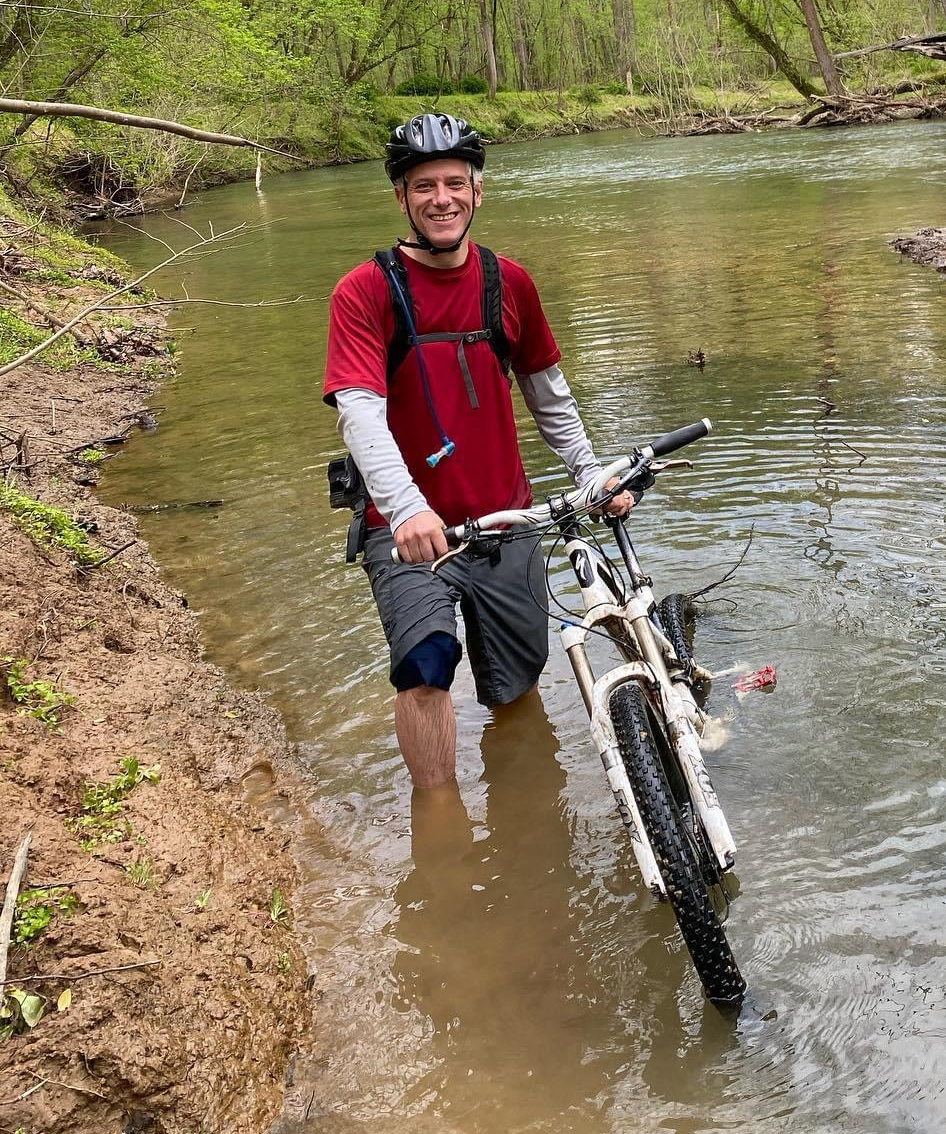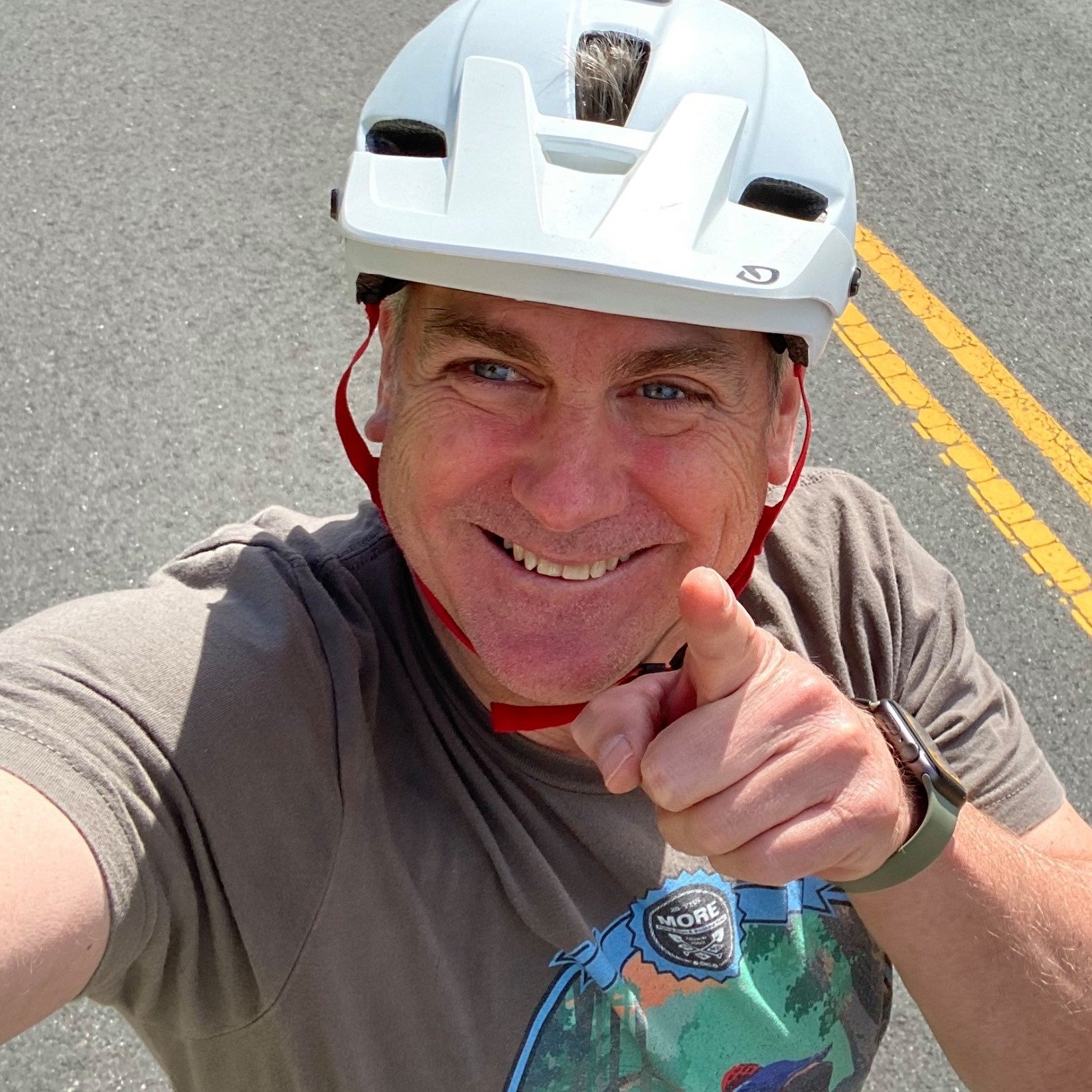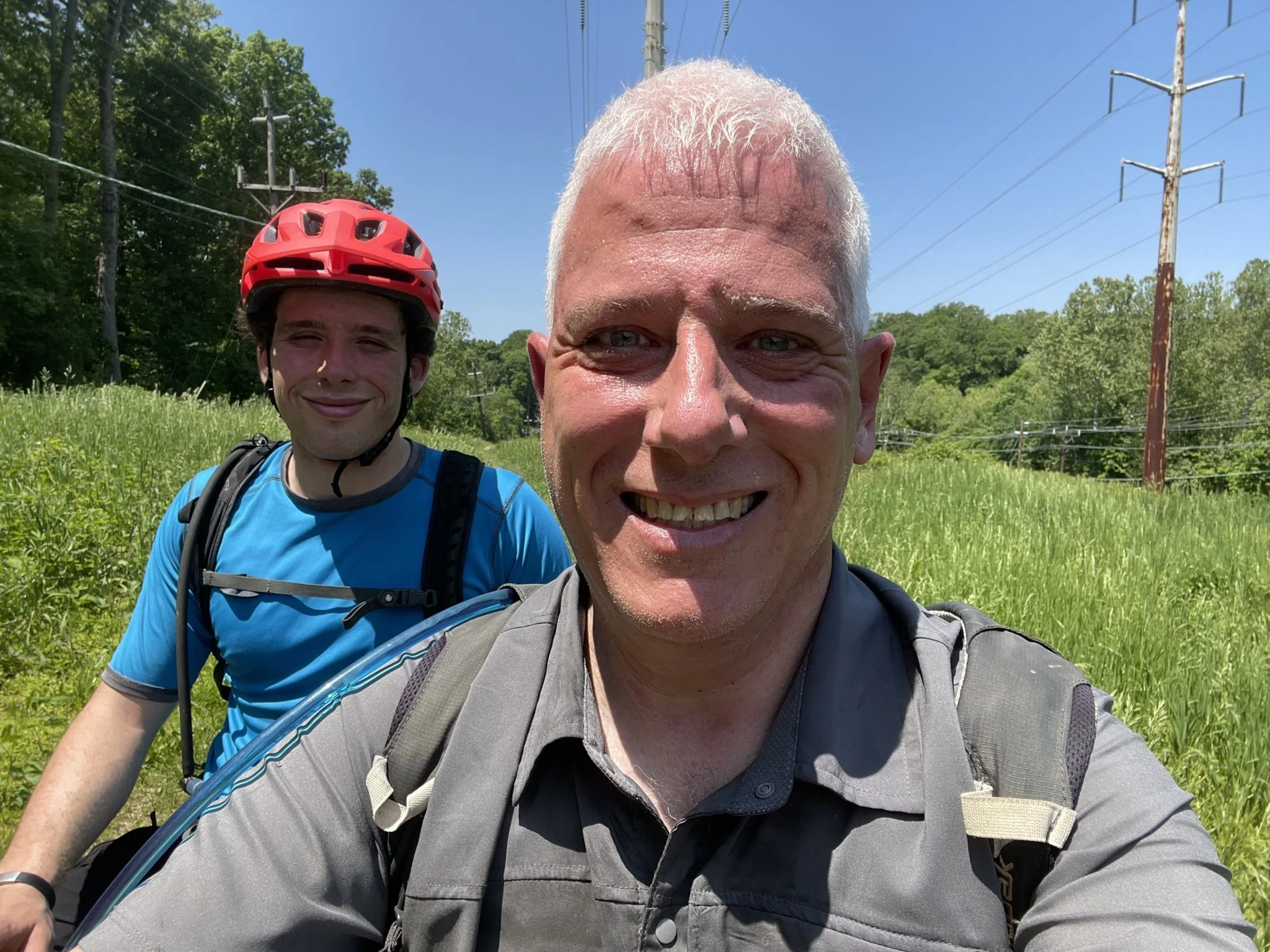
Looking Ahead
Welcoming Casey Anderson as MORE’s new President
By Martín Fernández
Those familiar with MORE and the organization's relationship with Montgomery County, Maryland, will have undoubtedly heard the name Casey Anderson before.
For years Casey served as chair of the Parking Planning Commission and was a valuable ally for MORE. Casey was instrumental in helping develop the natural surface trail connectivity in Montgomery County, which makes MORE’s annual signature event, the MoCo Epic, possible. He championed for the development of the Northwest Branch Trail, and helped make it a reality. He also worked tirelessly to ensure that mountain bikers were embraced by the community. He saw the potential that the regional mountain biker community had in assisting with planning and trail maintenance, especially when Montgomery County didn’t have the necessary resources.
-

Casey and son Kelly taking a break with the “amigos” along the Seneca Ridge Trail in Montgomery County, MD
Casey hails from the Greeley, CO area, and has been a resident of the DMV since 1986 when he came to attend Georgetown’s school of Foreign Service. Other than some absences to attend Columbia University, and an internship in New York, this area has been his home for nearly 4 decades.
Early on in his career Casey worked with multiple Non-Profit organizations and represented them on the hill. He also served on several non-profit boards and gained valuable experience that will help him guide MORE into the future.
Ernie Rodriguez, MORE’s previous president, was keenly aware of this and worked hard to recruit Casey to take the vacancy. “MORE is not your typical non-profit,” said Casey. “I agreed to become president because the organization has a Board of Directors and team of regional liaisons that really understand what their roles are. These are people who have the organizational capacity to know what to do and what not to do.” he told me. He added, “Also, I’m not really wired like most people, and really enjoy this kind of work. Especially for an organization with people who enjoy being part of it and who want to contribute, set goals, and work to achieve them.”
One of Casey’s primary goals is ensuring enthusiasm is sustained. He aims to continue to keep people, particularly MORE’s team of liaisons, positively engaged by providing them with the support they need.
Having been on the “other side” as a regional land manager will also add a new dimension to MORE’s leadership team. Casey understands the limitations some land managers face, as well as the pressure to be a responsible steward of a public resource. He understands many of the sensitivities and preconceptions that may not be obvious from the outside. This knowledge provides MORE’s leadership team with some insight into where the constraints are, where they can really push for something, and where “no” actually means no.
-

Enjoying the Patapso River
-

Commuting by mountain bike
Casey is also working on establishing more connectivity across the region. “When I was working in Montgomery County, MORE was running the NOVA Epic, and I used the Cross County trail, which extends from Great Falls to Lorton, as an example of what could be done,” he told me. “I posed the question to the planning commission, if Fairfax can do it, why can’t we?” He added, “no one could come up with an answer to the question, so the county worked towards that end. I think this is something we can replicate across the region.”
“Connectivity is one of the things I really hope that we can do over the next few years, it is not just to build more trails in places like Prince William County, but to really get a much deeper acceptance of the idea that natural surface multi use trails are an important amenity. Any decent sized park system should have a great natural surface trail network; it can be done, even in an urban area where there's a lot of constrained land.”
Casey understands that in many cases it’s the mountain bikers that are the ones that ultimately plan, build and maintain the trails, but once in place they are enjoyed by everyone, even by those who opposed them in the first place. Once there, people don't wanna give them up. “We have to at least encourage local land managers to give it a try, and at least test it out and to give our community a chance to show that if you let us build it, that we will generate a constituency for maintaining it. But we also need their assistance.”
Convincing regional leadership that this is important is the logical next step. “My goal is to also work with our liaisons, the ones who deal with local land managers, to help communicate the importance of institutionalizing trail crews. We have to ensure they (regional land managers) are willing to spend some money and be prepared to go out and make a significant request for permanent recurring additions to their budgets for staff that are dedicated to trail construction and maintenance. Right now we can point to Montgomery County as an example.” he told me. “My goal is that we can help other counties in the region achieve the same. Most capital budget baselines are assumed. If we can help regional land managers demonstrate the importance of natural surface multi use trails to their communities, then it’s much easier for them to allocate the necessary funds and put trail crews into policy - institutionalize them. If we can accomplish this in two more places in our region over the next few years I think it will be a big step forward.”
Providing liaisons with the tools, education and backing they need when they engage land managers is key to MORE’s success in building positive regional relationships. “We all have limited time, so delegation is something we really need to work with and we must recognize that the club has a great deal of resident knowledge,” Casey told me. “We need to continue to work to harvest that knowledge and experience, and help our advocates when they work with land managers. I think that one of MORE’s huge assets is that there are many people who recognize that what we are trying to do is worth it.”
Casey with his son Kelly on the Cabin John trail.
Casey also wants to ensure that MORE continues its sMORE’s program, as well as find a way to support NICA. “We have to have succession planning and development,” he told me. “There are many of us in positions of leadership who won’t be around forever, and the sMORE’s program and NICA programs are a great way to transfer knowledge and enthusiasm to future advocates and mountain bike stewards. We have an opportunity to build a constituency for mountain biking and mountain bike advocacy in the future. It’s important we continue to build a foundation for people who are going to understand not only the joy of being on bikes, but the joys of being on bikes on natural surface trails.”
Casey’s start in Mountain biking is similar to many, “I bought a bike and realized I spent a lot of time driving to get to a trail head,” he told me. “Wouldn’t it be great if I could just ride out my door?” That was the catalyst that brought him to mountain bike advocacy and the message he carried along when he worked at the Montgomery County Parks and Planning commission. That’s the backstory he brings to the MORE presidency, along with his years of non-profit experience.
“Mountain biking is so much more than just riding a bike. It’s about connecting with nature; for me, it’s the fountain of youth. It’s about doing something healthy; it’s magic… Ultimately”, he told me, “it's about building a community and being part of something that's bigger than just you. We're gonna go build some trails and ride some bikes.”


